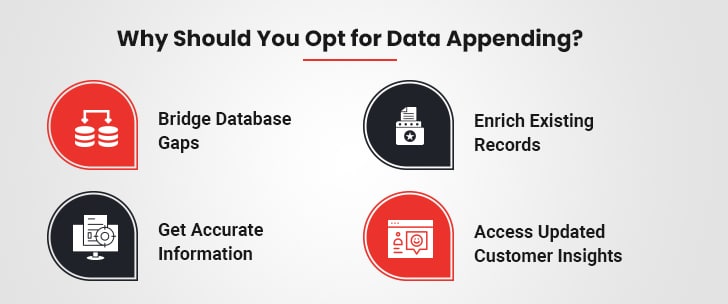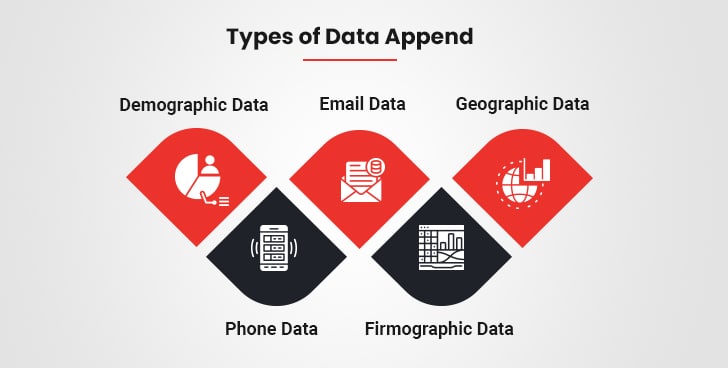The retail industry is a dynamic matrix governed by changing consumer behavior, geopolitical conflicts, economic volatility, and unpredictable weather conditions. Moreover, online shopping is gradually taking over traditional in-store shopping, as customers have the option to explore a wide range of products, compare prices, read reviews, and purchase with just a few clicks— that too, from the comfort of their homes.

According to the latest reports, approximately 43% of US consumers prefer online rather than in-store shopping, making the country with the highest online shopping preference. Thus, the competition intensifies for retailers as they must cater to customers’ unique needs and adapt to dynamic markets while managing operational expenses. Besides, there are plenty of examples of once-successful stores going out of business for years.
The good news is that retailers can easily strive and thrive in such environments by leveraging the data-driven approach. Modern customers expect seamless and personalized experiences at every step of their journey, whether shopping online or in-store. This is only possible when retailers have a thorough understanding of their customers. In other words, retailers need actionable insights into customers’ preferences, purchasing patterns, and expectations to remain competitive.
However, obtaining and maintaining accurate customer data is a significant challenge. Issues like data degradation and incomplete profiles prevent retailers from creating personalized and seamless customer experiences. In response to these challenges, many retailers turn to a trustworthy data appending company to enhance their customer insights and drive business growth.
Table of Contents
Different types of data that can be appended
Role of data appending in the retail industry
Understanding Data Appending
Customer data rots very quickly due to its dynamic nature. Basing decisions and strategies on this decayed data leads to reduced marketing campaign effectiveness and missed sales opportunities. Even worse, this inaccurate data prevents the right messages from reaching the right audience. The best solution here is conducting a data append. The process involves supplementing the existing database with additional details or missing information retrieved from external sources. These details can be contact information, postal address, income levels, and more.
The process involves identifying discrepancies, matching records with external data, and appending new, verified information. The additional layers of information allow retailers to generate more accurate insights about their target audience, which enables more effective decision-making and campaign targeting. Moreover, retailers can narrow down their target audience and develop more precise customer segments to effectively cater to all of them.

In other words, data appending fills data gaps and ensures that retailers have complete and accurate customer profiles at their disposal. It transforms raw customer records into actionable datasets, empowering retailers to make data-driven decisions.
For example, a fashion apparel retailer plans to reward its loyal customers with points via an email campaign. The retailer already has their name, age, and postal address but lacks email addresses. That’s where data appending companies come to the rescue— augmenting the retailer’s database with additional details. This data enrichment makes it easier for the fashion apparel retailer to reward loyal customers and strengthen the relationship.
This is just one example. Retailers can append various types of data, including demographic, firmographic, phone, email, and so on, to build more comprehensive and accurate customer profiles. This detailed understanding of the target audience facilitates greater personalization of marketing campaigns and strategies.
Boost your database accuracy with our Data Appending Services! Get updated, verified information now.
Types of Data That Can Be Appended
Every business has requirements. Thus, the type of data a retail company should append depends on its marketing goals and business requirements. Take a look:

1. Demographic Data
Demographic data is one of the most commonly appended types of information. It helps retailers understand their customer’s unique characteristics by providing information such as age, gender, marital status, education level, income, occupation, hobbies, interests, buying behavior, and more. This information helps with detailed customer segmentation, paving the way for personalized marketing campaigns that resonate with specific groups.
For example, an electronics retailer wants to segment its audience based on income levels to provide exclusive discounts. However, the company has clients’ names, addresses, and phone numbers. Demographic data append services provide the necessary information, helping the electronics retailer group customers into different economic segments and tailor its offerings.
Furthermore, knowing whether a customer is married or single also influences product recommendations, making it easier for retailers to create targeted campaigns that speak to the customer’s life stage.
2. Phone Data
Appending phone data ensures that retailers have accurate, up-to-date, and verified contacts. This is very helpful for businesses looking to improve communication with their customers and strengthen their relationships. That said, there are two types of phone data appends as listed below:
- Phone Append: It is the standard process of adding missing phone numbers to a customer profile using available information.
- Reverse Phone Append: Contrary to phone append, this process involves identifying customers based on their phone number.
Both phone append and reverse phone append are valuable tools for customer relationship management (CRM). Accurate contact records enable retailers to engage with customers directly through calls or SMS campaigns. This is particularly useful for time-sensitive promotions, order updates, or customer service.
Think of a homemade chocolate business starting the winter special sale and gifting chocolates with clients’ names on them. The company already has phone numbers and email addresses but requires the customers’ names for this— thus, calling for reverse phone appending services!
3. Email Data
Despite messengers, chat apps, and social media, email holds its ground firmly as one of the most powerful communication channels. However, email data can become obsolete quickly. Thus, maintaining an up-to-date email list is important for successful email marketing campaigns. There are two different ways to append emails:
- Email Append: It is the standard process that involves adding missing or updated email addresses to customer records.
- Reverse Email Append: This process helps obtain other details, such as name, address, and social media profiles, based on an email address.
Boost Your Marketing Campaigns with Accurate Data! Try Our Email Appending Services Today.
Email data appending ensures that retailers are reaching customers via the correct channels. This reduces bounce rates and improves deliverability, ultimately boosting the effectiveness of email marketing efforts. It is a powerful tool for retailers looking to communicate effectively and carve a unique niche in the industry.
4. Firmographic Data
The firmographic data append is beneficial for B2B (business-to-business) retailers. It includes information such as company size, industry, annual revenue, location, total employees, market segment, internal structure, NAICS code, and more. This information helps the leaders better understand their clients and prospects, ensuring that marketing efforts are targeted at the correct type of business.
Furthermore, B2B retailers can make more informed decisions about which companies to target and how to approach them. This is especially useful for creating tailored solutions and offers for businesses based on their specific needs. For example, a tech company aiming to target mid-sized companies for its robust CRM solution can leverage firmographic data to find this information.
5. Geographic Data
Here, location-based information such as the customer’s country, state, city, and even their specific neighborhood data is appended. This information enables retailers to tailor their offerings to local preferences, trends, and behaviors. For example, a woolen apparel retailer can target customers in a specific area with region-specific promotions or adjust stock levels based on the preferences of customers in different geographic regions.
Other than this, geographic data also proves valuable for supply chain management, helping retailers ensure they have the right products in the right locations at the right time. This helps the retailers avoid overstock and stock-out situations.
To sum up, any significant customer data point, whether name, phone number, email address, etc., is the key to unlocking enriching customer insight when appended at scale. Thus, understanding how data is appended is also important. There are two main approaches for appending data: batch append and real-time append.
In the first one, data is appended in batches, supercharging the customer database with specific insights, whereas real-time append is an ongoing process. Retailers can opt for batch append to get insights for standalone campaigns and initiatives such as lifetime value analysis and attrition modeling. For instance, a direct-to-consumer business wanting to switch from paper bills to electronic invoices should opt for batch appending to add email addresses to customer records.
Alternatively, retailers leverage real-time append as part of ongoing data hygiene initiatives. In such scenarios, an interface is established between the retailer and the professional provider, allowing for real-time append. The improvements are made using a single data point, such as customers’ email addresses or phone numbers, to form a more comprehensive customer record.
This approach is ideal for cross-sell/upsell conversions at the point of sale. Isn’t it interesting that a single data point such as postal address or phone number helps retailers unlock intelligence about individual customers and leverage it to drive a multi-bag purchase!
One data point, for instance, might reveal that a customer is interested in gluten-free products, allowing the retailer to highlight such products that are on sale. In a nutshell, data append services play a transformative role in enabling retailers to adapt to market dynamics and improve customer engagement.
Role of Data Appending in the Retail Industry
1. Creating Seamless Customer Experiences
In a bid to increase market share and win over customers, retailers use data to link all aspects of the customer experience, from digital to physical. Data append precisely serves the purpose by providing accurate and enriched customer profiles, allowing retailers to offer personalized recommendations, targeted promotions, and consistent interactions across touchpoints. For example, appending demographic and geographic data enables retailers to customize offers based on customers’ locations and preferences.
2. Understanding Customer Preferences and Behaviors
In addition to providing retailers with additional information about individual customer profiles, data appending enables them to understand how and when their customers shop, what they prefer to see in-store vs. online, and which products and displays pique their interest. This understanding helps in product development, inventory management, and crafting relevant marketing campaigns.
3. Embracing Dynamic Advertising and Pricing
Data is altering how brands perceive consumer segments to shape their marketing strategies. With more information at their fingertips, thanks to data append, retailers can easily group consumers into micro-segments such as a customer’s social influence, shopping behaviors, and more. Accordingly, they can alter their advertising campaigns and pricing strategies to resonate with specific groups. Moreover, data appending ensures that retailers have access to current and accurate information, enabling them to respond effectively to changing consumer behaviors.
4. Tapping into New Opportunities
Appended data enables retailers to identify untapped customer segments and new market opportunities. For instance, firmographic data can reveal potential business clients, while geographic data can guide location-based expansion strategies. Retailers must identify these opportunities to capitalize upon them and carve a unique niche in the industry.
The benefits of data appending are manifold, too significant to be ignored by any retailer. It offers enriched customer insights that help in making informed decisions and strategies, which are necessary to remain competitive in the dynamic marketplace. Knowing the key principles of data appending helps retailers make the most of this powerful tool.
Key Principles of Data Appending
- Data Accuracy
The quality of appended data is vital. Retailers must ensure that appended information is accurate, verified, and up-to-date.
- Compliance with Privacy Regulations
Retailers must adhere to data protection laws such as the GDPR, CCPA, and other regional regulations. This includes obtaining customer consent wherever necessary and working with compliant data appending companies.
- Relevance of Data
Only relevant data should be appended to avoid overwhelming customer profiles with unnecessary information. Retailers should focus on data that aligns with their business objectives.
- Data Security
Retailers must implement robust data security measures to protect customer information from unauthorized access or breaches.
- Continuous Process
Data appending is not a one-time event but should be part of an ongoing strategy to ensure customer profiles remain accurate and actionable over time.
Bottom Line
Today, retailers are seeking effective ways to collect and harness customer data to better understand them, make informed decisions, and develop fail-proof strategies. Data append services are the way to go forward as these help retailers bridge the gaps and augment the existing customer records. These enriched customer insights empower retailers to effectively address the challenges of incomplete and outdated data while unlocking new growth opportunities with data appending.
By adhering to the principles of accuracy, compliance, and relevance and implementing structured processes, retailers can transform their data management practices. In doing so, they position themselves for success in a dynamic marketplace, where customer insights are imperative for competitive advantage.





